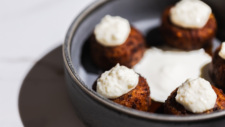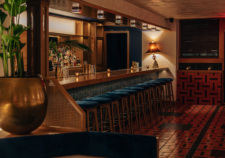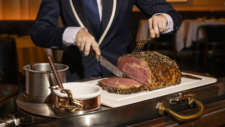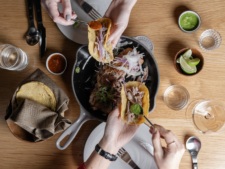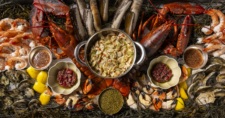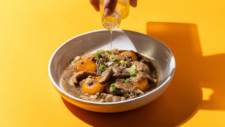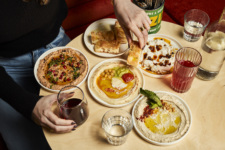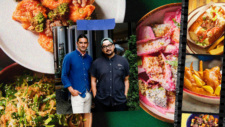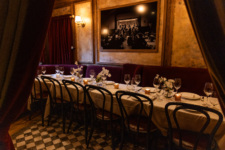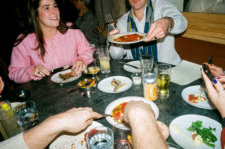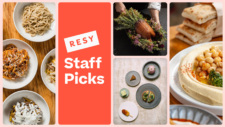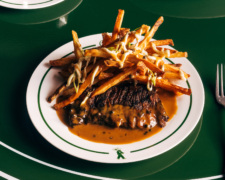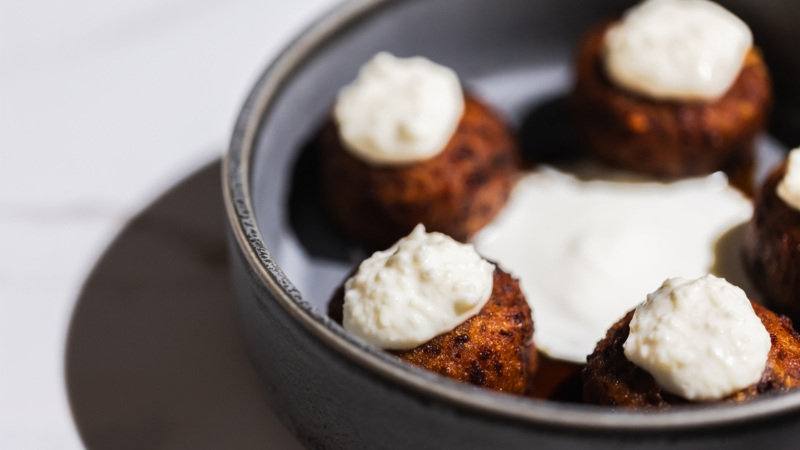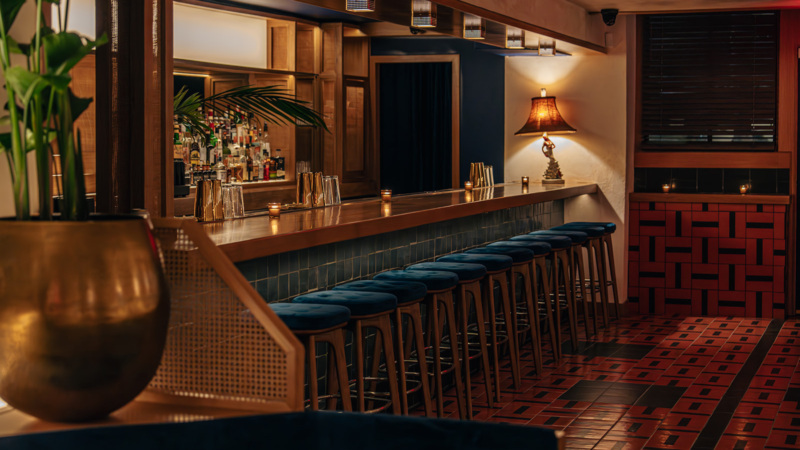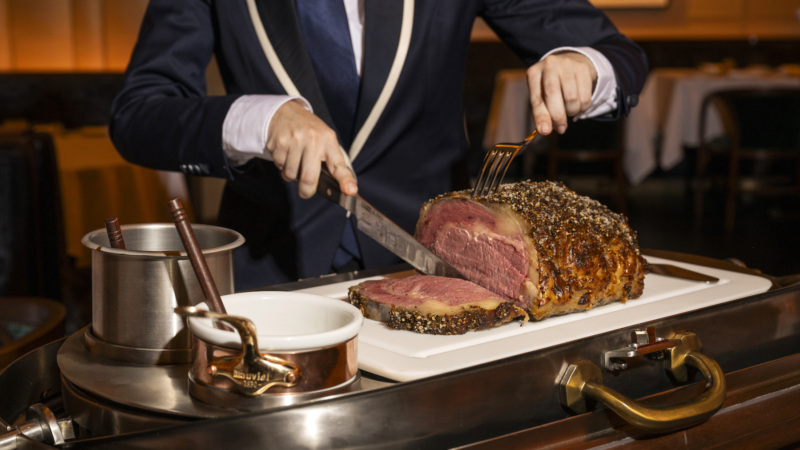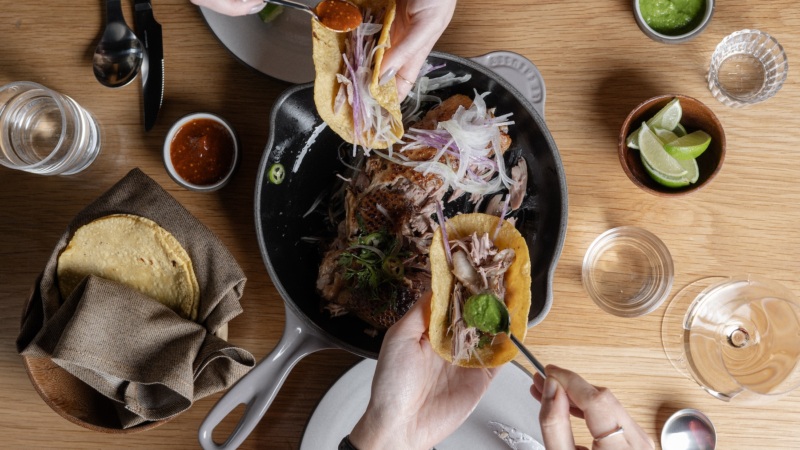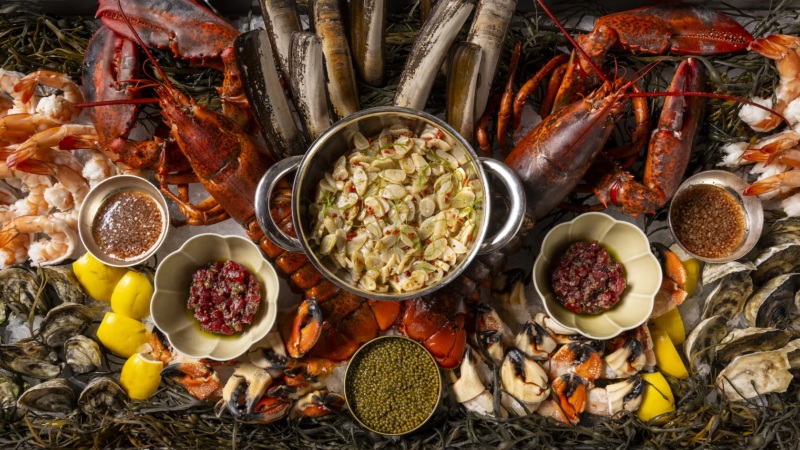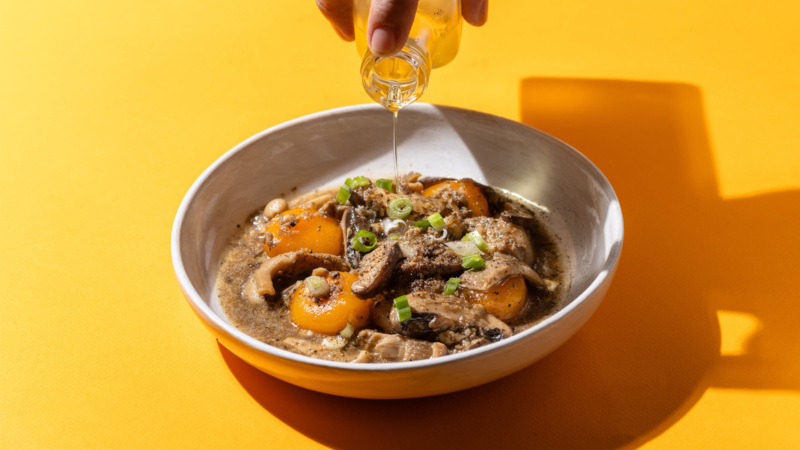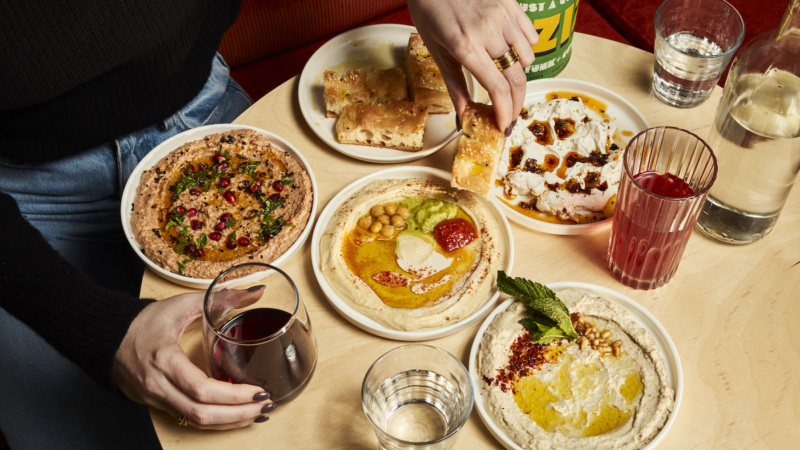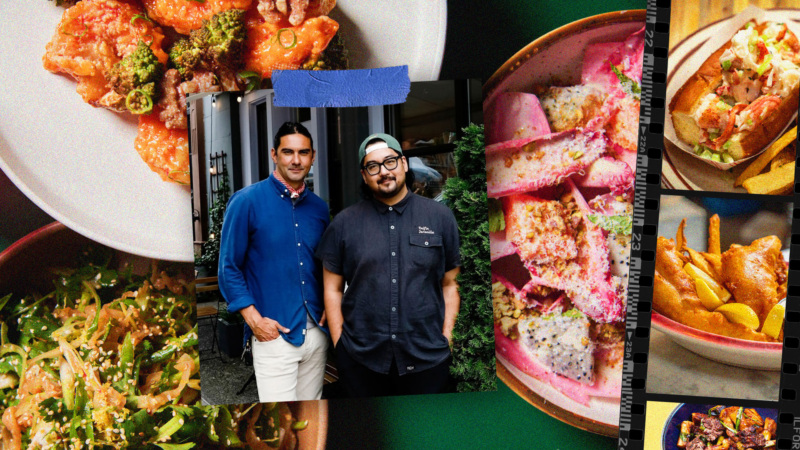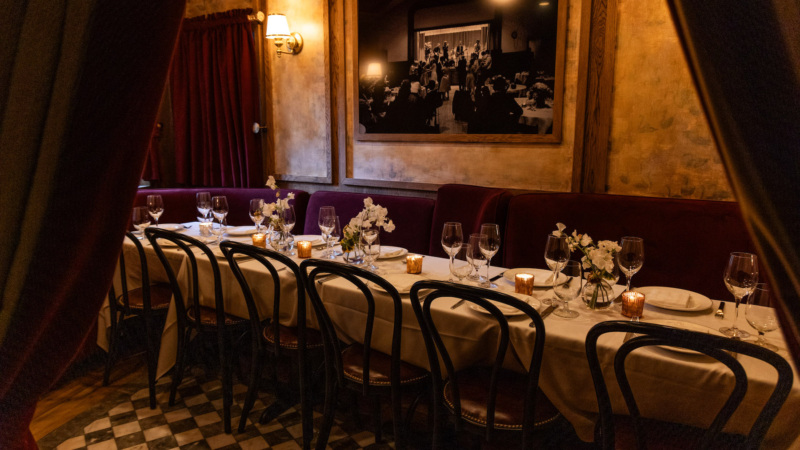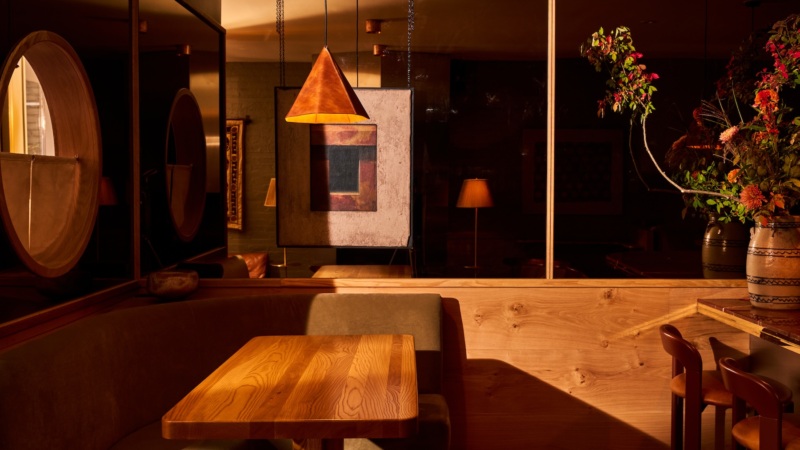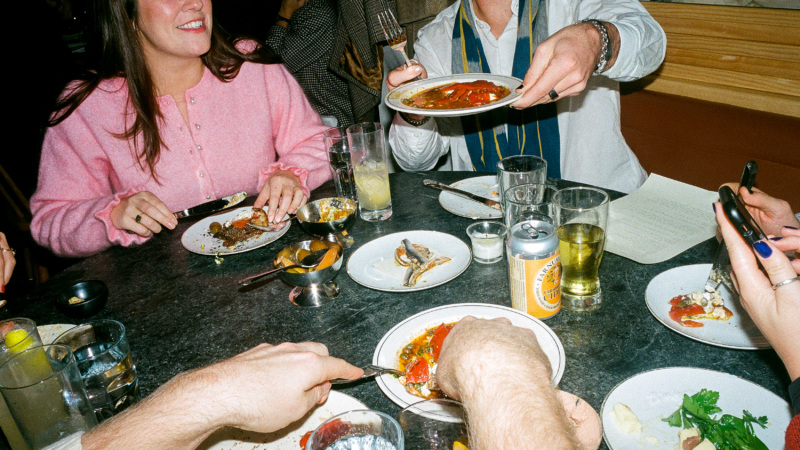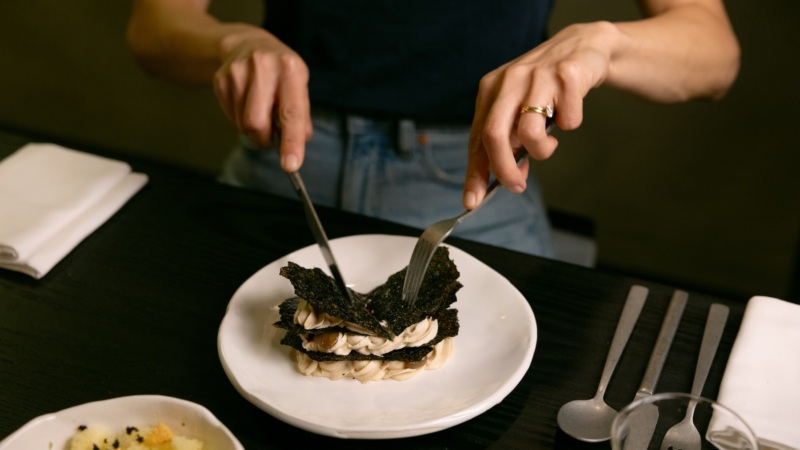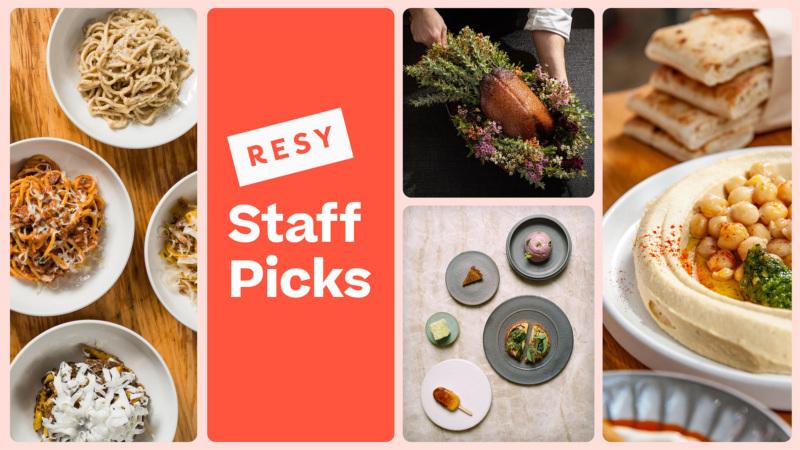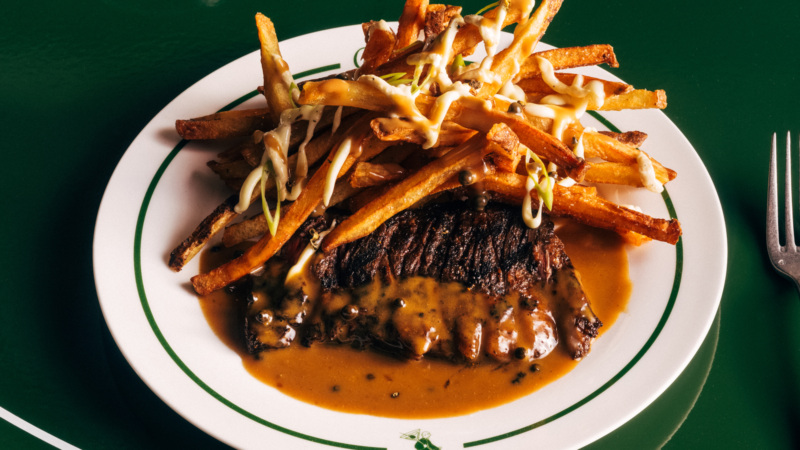
At Hellbender, Chef Yara Herrera Cooks on Her Own Terms
Chef Yara Herrera’s quesadilla says it all. The open-faced, squash blossom topped, almost-pizza-like creation that comes to the table at Hellbender has all the hallmarks of the dish — an heirloom tortilla and gooey melted cheese included — but they come together in a way that feels new and exciting.
The same goes for much of the Hellbender menu. There’s birria, but it’s made from oyster mushrooms. Shrimp cocktail comes with pico de gallo instead of the typical cocktail sauce. Their riff on a torta comprises crispy tilefish instead of meat. It’s new but familiar, crowd pleasing but innovative, and most importantly, highly delicious.
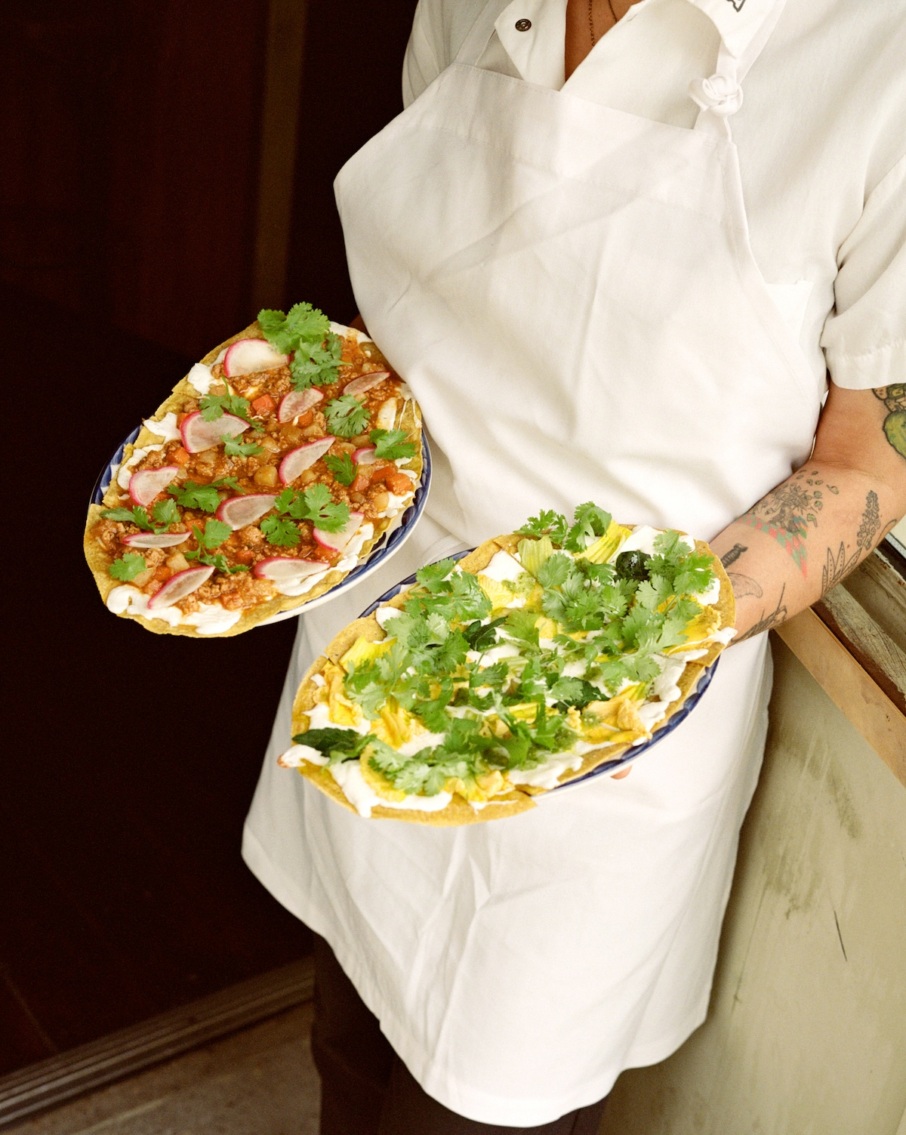
In 2018, she moved to New York to work at Ko, and she’s been in New York ever since. And it was here where she finally began to reference the food she grew up with in her professional work, eventually landing at the now-shuttered Xilonen and later at Sobre Masa. Working closely with other Mexican chefs helped Herrera find her own voice and style of cooking that she’s since brought to Hellbender, which opened in February: technique driven, ingredient forward, approachable, soulful, refined Mexican American cuisine.
We spoke with Herrera about her journey to Hellbender, her love of heritage grains, and how she’s applied her fine dining background and Mexican heritage to the food she cooks today as an executive chef and partner.
Resy: Since you started your career in Los Angeles, how would you describe the difference in dining scenes between New York and L.A.?
Yara Herrera: There is a stronger sense of culture and community around food in New York that I didn’t find back home. When I first moved to the city, I learned that people care more about food and the restaurants here than they did in L.A. People are constantly talking about chefs, new restaurants, and the best restaurants. It’s more exciting, but also more exhausting to keep up. You can carve out your own path here, and find a community to support it.
Do you find your style of cooking has shifted since you’ve been in New York?
Definitely. When I first moved, it was for a job at Momofuku Ko and I was still very much interested in fine dining. It’s not that I’m not anymore, but it was my main focus. In 2019, I still wasn’t sure about what kind of food I wanted to make; I just wanted to do a good job at work. It wasn’t until 2020 and 2021 that I began to find my style and my voice. The result of many events, including a world pandemic, led me to find that Mexican-leaning food might just be my thing. I finally found my style, after cooking fine dining for a decade.
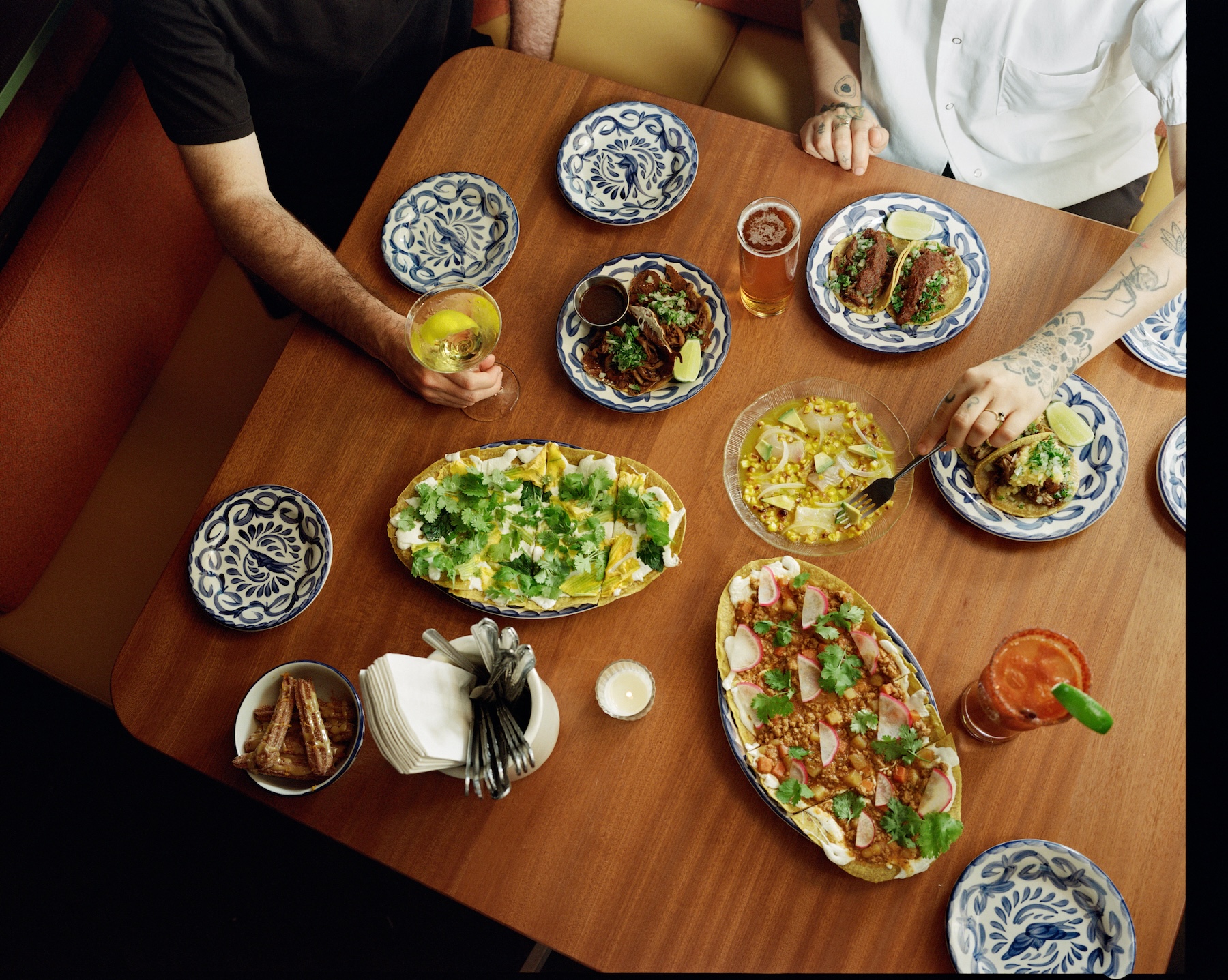
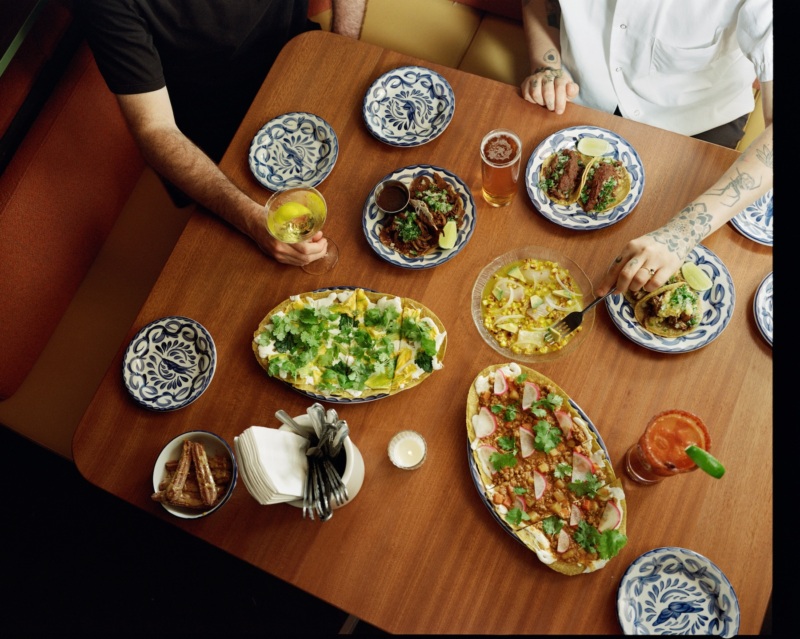
How did you come to work at Hellbender? Was the concept your idea?
The concept wasn’t completely my idea; it’s a collaborative project between my partners, the owners of Rolo’s, and I. Shortly after I did a Mexican take-over of the menu there, they approached me with the opportunity to partner up and open Hellbender. At the time, we weren’t sure what it would be. We all sat around in meetings and bounced ideas back and forth and, to this day, Hellbender keeps on evolving.
The food is different from other Mexican restaurants in the city. There’s a casualness to it, but it’s still focused, ingredient forward and technique driven. Was that intentional?
My mission with Hellbender has been to make sure anyone coming in feels comfortable. Starting from looking at the menu. I want it to be easy to read and to have ingredients and dishes that our guests are familiar with, like fajitas and shrimp cocktail, but take the opportunity to highlight ingredients that are exciting to me and deserve a little attention, like heritage strains of masa or Jimmy Nardello peppers. The technique part is a combination of the things I’ve learned throughout my career, and consulting with my chef-partners. We are always working together, brainstorming ideas to make things the best they can be.
When Hellbender first opened, the menu had more Tex Mex-leaning bar snacks. Why did you change it to something more rooted in Mexican food?
Tex Mex is its own cuisine, commonly confused for Mexican American food. I haven’t spent much time in Texas, and I didn’t want that to be an identifier for Hellbender. We originally opened with a bar snack concept and a few months in, we learned that the guests who came in were treating it more like a restaurant than a bar. I felt like this was my chance to make more elevated dishes, more thoughtfully plated and delicate. The fried Oaxacan cheese sticks are genius, and it was a dish that worked the first time we tested it out, which rarely happens during our vision quest. Every day, I’m testing the waters with what I think guests will like; some things work, some things don’t, and others are more of a value concern. “How much will someone be willing to pay for this?” is a common question in my head.
You came up in fine dining. How has that impacted your cooking and work ethic?
It’s helped me keep a certain standard in mind, the highest one. At the same time, I think about all the things I hated about fine dining. For example, trying to make a vegetable a shape that it isn’t. I appreciate ingredients and I now let them shine, instead of transforming them into something they aren’t. I learned many techniques working in fine dining, and I am having a lot of fun figuring out which of them I can incorporate into the food I make now, while keeping it affordable and executable. I love hard work, I truly do. I think anyone working in a kitchen has to, and I often have to remind myself to take time off to rest and reset. Mexican food takes a lot of labor and a lot more ingredients than you can imagine. The prices on our menu are as affordable as we can make them, while still making sure our staff gets paid well and has access to benefits because that’s important to me as a business owner.
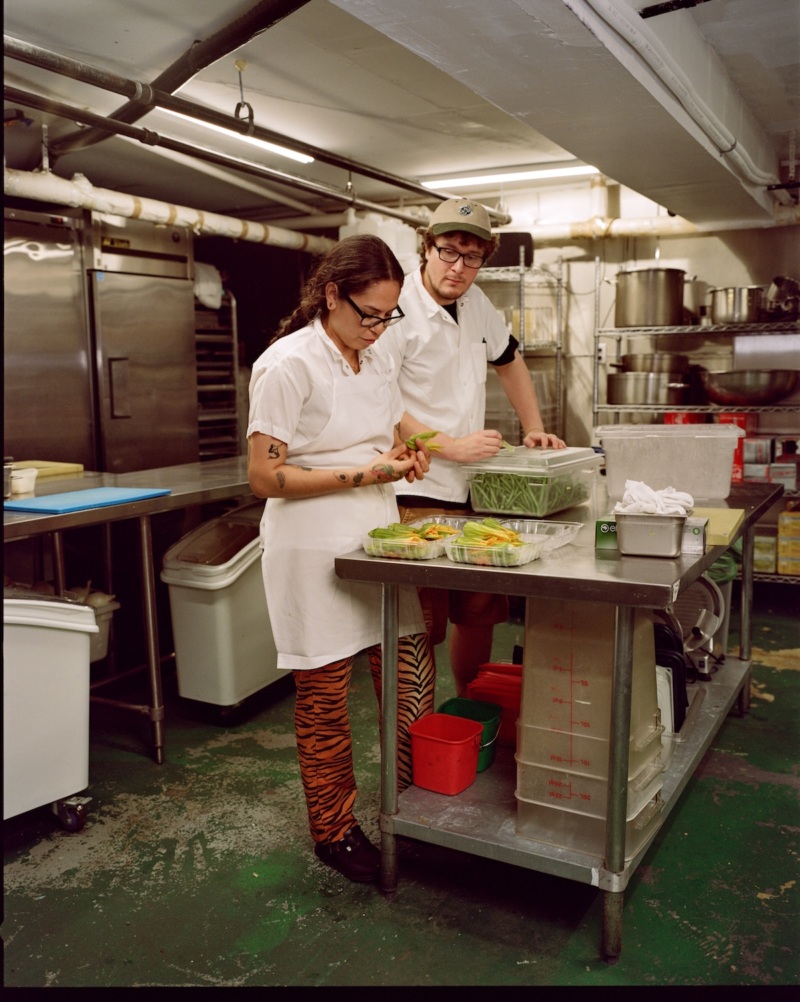

Since your father currently lives in Mexico and you have a deep connection to the country, how does that come through in your food?
Anytime I visit my dad he always has a fun restaurant or taco spot to show me. I think he gets more excited than I do sometimes! I really enjoy listening to him talk about his favorite food in the city (he currently lives in Mexico City) and why, as well as things he loved growing up. I met my dad when I was 25; I am currently 32. Food is one of the first things that helped us bond and start to build a father/daughter relationship.
The Mexican food scene in New York has evolved quite a bit in just the last decade. You now have chefs like Enrique Olvera and Cosme on the more fine dining side, but also popular spots like Taqueria Ramírez, For All Things Good, Aldama, Oxomoco, and Corima. That’s in addition to all the classic spots in the Bronx like La Morada, or the many spots you’ll find in Corona, Queens, and Sunset Park, Brooklyn. Why do you think this might be?
Enrique Olvera was a huge inspiration to many Mexican and Mexican American chefs. Ten years ago, the most praised food in gastronomy was primarily European and made by white male chefs; you hardly heard about other cultures. Mexican food has always been perceived and reduced to “cheap tacos;” I think Olvera showed the world how much more it can be. The current generation has followed [him] and felt inspired by that. Fidel [Caballero] of Corima and Gerardo [Alcaraz] of Aldama are young chefs that have, in some way, followed in his footsteps and put Mexican food on a pedestal while staying true to Mexican techniques and ingredients and combining that with things they’ve learned along the way in their careers, showing the world that Mexican food isn’t just street food.
Where do you go to eat and be inspired?
Two restaurants I love are Rolo’s and Wildair. But I also really enjoy sushi. My first kitchen job was in a Japanese restaurant. It was the first time I really tried Japanese food and it has a place in my heart; it is my comfort food. I love dining out overall and I am always looking for new places to try. New York is a great place for that, from food trucks to fine-dining restaurants. I like it all.
Are there fellow Mexican or Mexican American chefs in the city that you admire?
So many: Fidel Caballero of Corima, Milton Revilla who’s currently at Esse Taco, Marisol Corona, formerly of Atla. Zack and Diana Wangman of Sobre Masa. Carlos Macias of For All Things Good. These are all amazing talented people that I find proud to share common interests with.
You mentioned an interest in preserving heritage grains and certain ingredients that are becoming less common in Mexican cooking. How are you doing that and are there particular dishes on the Hellbender menu that reflect that?
A big part of making Mexican food in New York reminds me that I am taking a style of food from a country that isn’t where I am currently living. Mexico is still considered third-world and I think about how privileged I am to celebrate their culture in the U.S. The best I can do is support brands that work directly with farms and families in Mexico to give the financial support back.
We buy our corn products from Sobre Masa, who imports native heirloom corn from Tamoa. They are a company that seeks out farms and families that grow heirloom corn. Tamoa buys from them directly and imports these products to the States, along with heirloom beans, chiles, and chocolate. We try to do the same with our beverage program, constantly seeking brands with similar concepts from mezcal to tequila and other spirits.
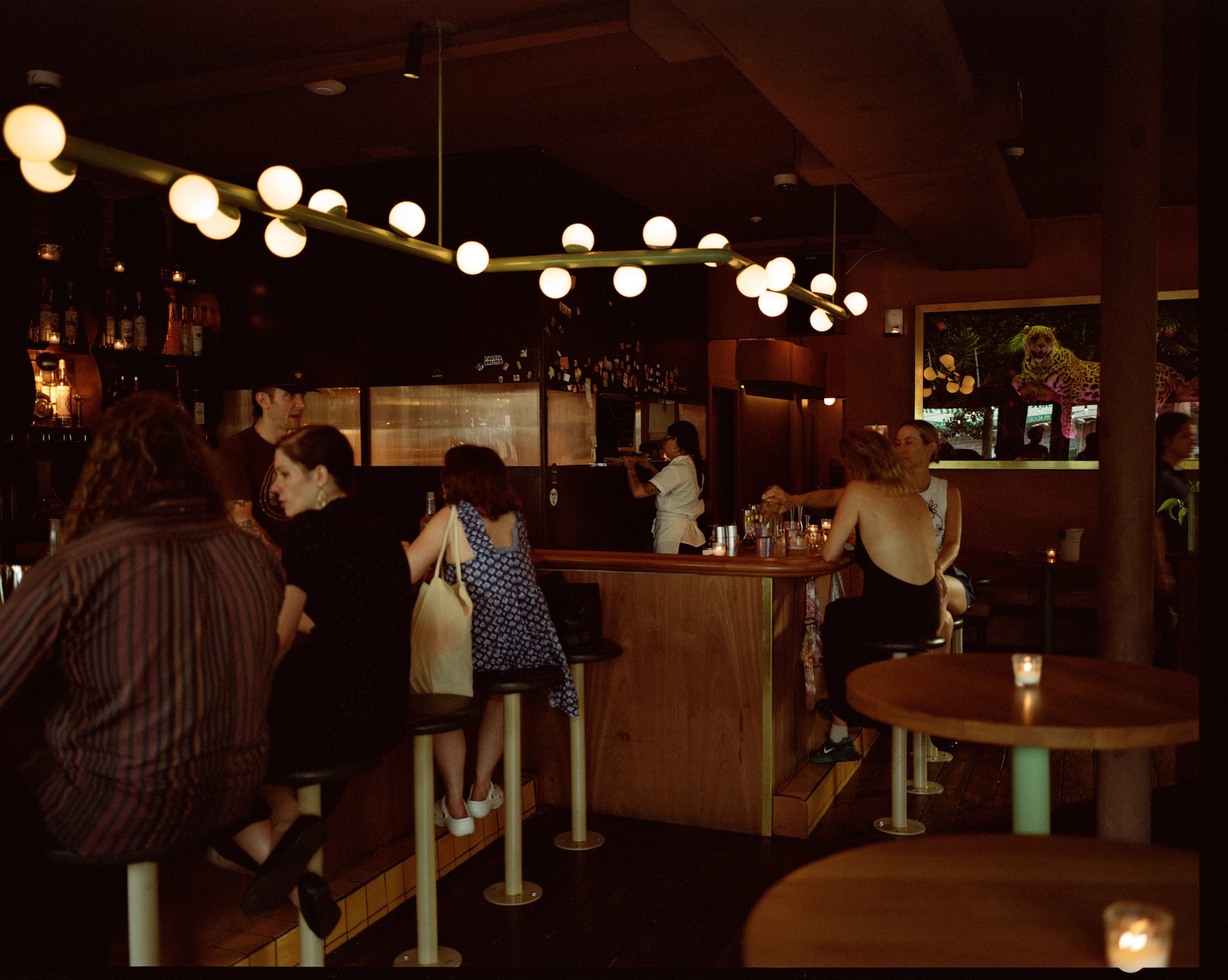
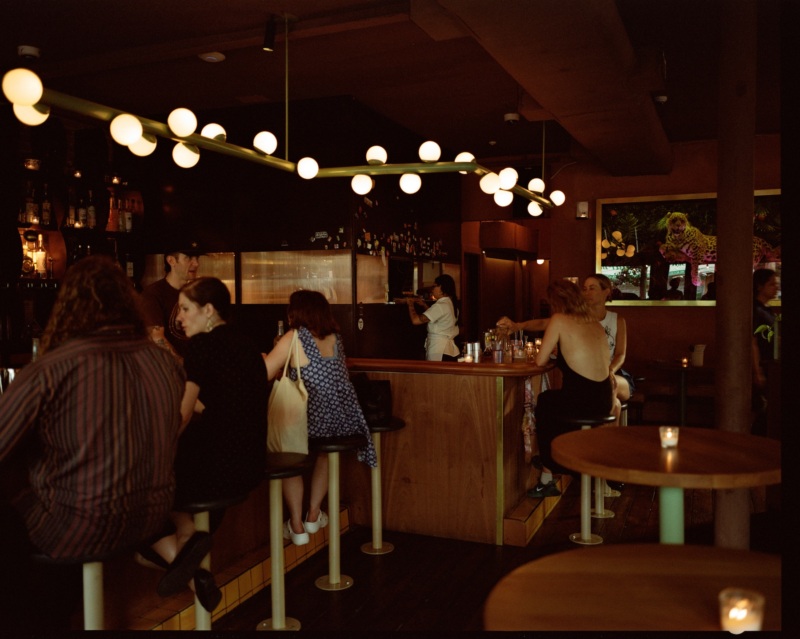
We’ve got to talk about the Jell-O. Where does it come from? Is it always on the menu?
“The Jell-O of the Day” is something we started at the beginning of Hellbender. Gelatina was a celebratory dessert for me growing up. If there was a birthday cake, there was a Jell-O. Most commonly made with artificial flavoring, I thought it would be fun and cute to test out some real unique flavors. We made corn milk, hibiscus passionfruit, and a piña colada Jell-O for example. It was a bit of an obsession of mine for a while. I still love Jell-O, and will run a special whenever the inspiration sparks up and I find the time. This week at Hellbender, I’ll be running an arroz con leche.
Your time at Sobre Masa seemed to be particularly formative. Can you speak to that? Did you have a mentor there?
Zack and Diana Wangeman have such an amazing mission with Sobre Masa and really changed my perspective on sourcing. Their mission to also highlight native heirloom ingredients became mine. I will never make traditional Mexican food because I didn’t grow up in Mexico. I grew up in Los Angeles, with my Mexican family, and most of us don’t speak English. Working at Sobre Masa reminded me how much power you have as a chef to change the way people view our culture through food.
You do pop-ups and collaborations often, like the Wildair doughnut, a dinner at Gertrude’s, one at Sobre Masa. Why is this important to you and your cooking?
A lot of my independent career and how I met my business partners now, started with pop-ups and collaborations. For me it’s always a great exercise to work with someone else in the culinary field and learn how they do things with the same tools and ingredients. There’s always something new I’ve never seen before. I think it’s also a good way to gain exposure to a different type of clientele that maybe goes to Gertrude’s but isn’t familiar with me and my cooking. Every collaboration I do is unique and fit to the space and theme of the people I am working with. It keeps me evolving as a chef.
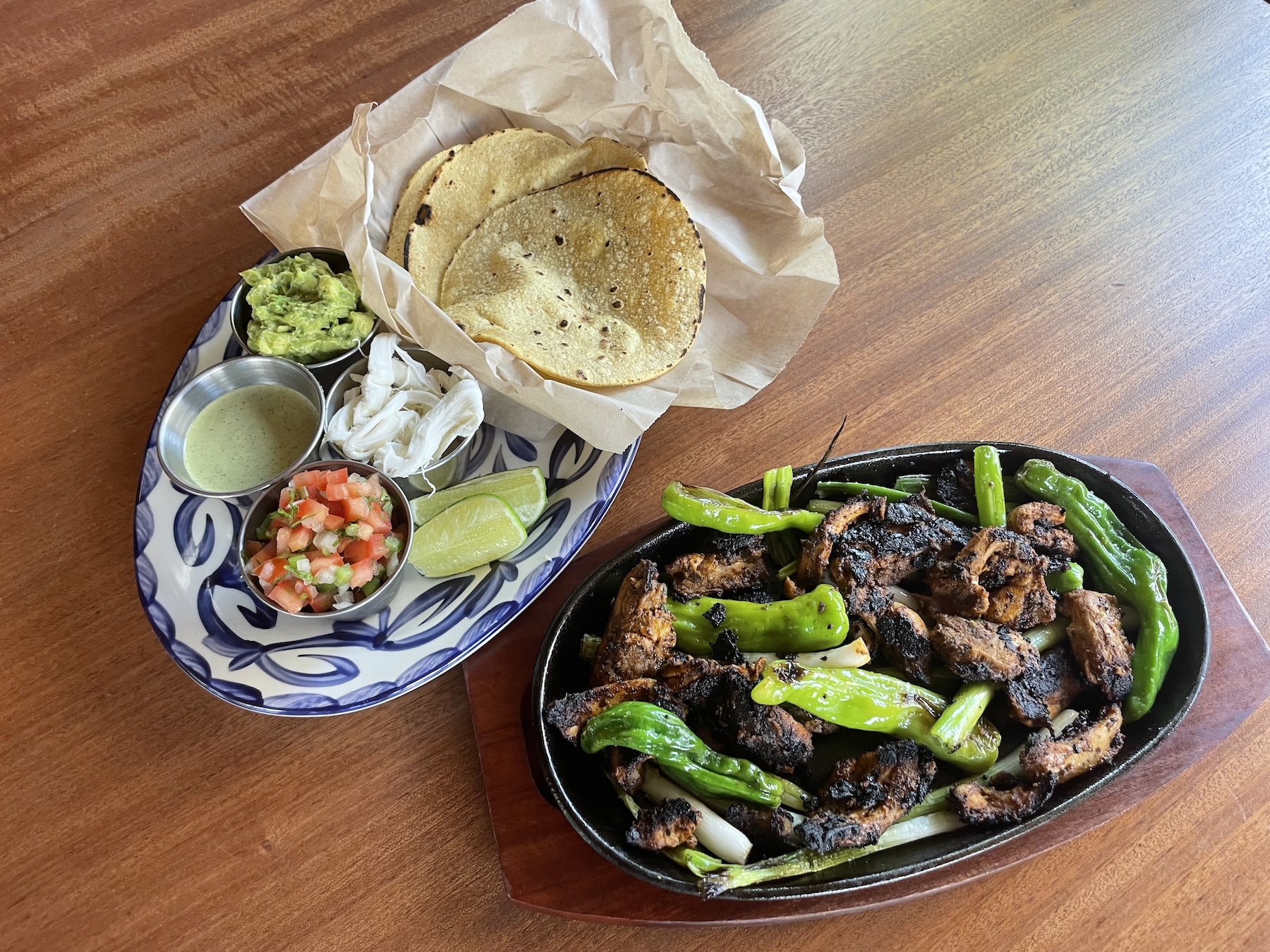
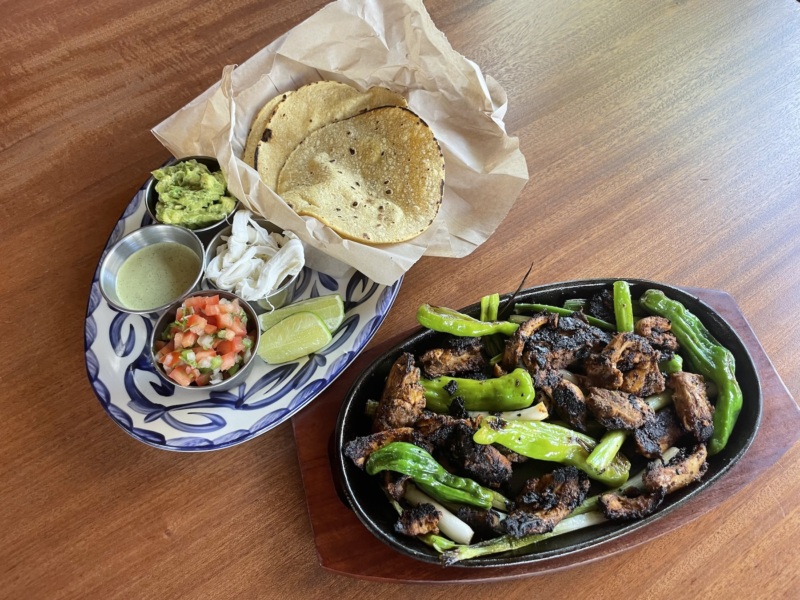
Ridgewood is a specific neighborhood that is rapidly changing; has it been receptive to what you’re doing at Hellbender? Are there any neighborhood favorites that you like?
Ridgewood is a hard part of the city to have a business in, I am still learning a lot about what the neighborhood needs and wants as well as how I can make this happen while staying true to my vision. There are so many cute places and a strong sense of community. I love Cholita, Decades Pizza, Panina Pizzeria, and Salty Lunch Lady!
What’s next for you and Hellbender?
That’s a hard question to answer. For now, making this place profitable, keeping a happy team, and building a positive legacy is my main focus. I hope that Hellbender prospers for years to come. There will always be a small piece of me that would love to cook a tasting menu — I don’t think Hellbender will be that place — but maybe a future project will. For now, I’m here for the ride and although it’s been a tough year, I am having a lot of fun, and I feel truly grateful to be where I am today.
Hellbender is open daily for dinner starting at 5 p.m.
Kyle Beechey is a New York-based freelance writer and dinner party enthusiast who lives on the Lower East Side. Follow her on Instagram.




